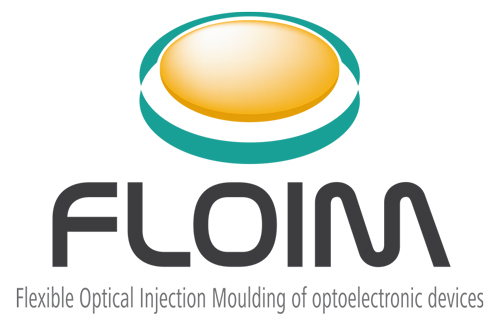
FLOIM will develop an automated process for optical assembly of optoelectronic devices, based on optical quality injection overmoulding. Freeform and microstructured optical surfaces are generated directly on the components through thermoplastic microreplication, using microstructured inserts. The technology aims to simplify the assembly routes for heterogeneously integrated optoelectronics, with drastic cost reduction, high productivity and improved device performance. Such advantages are demonstrated by three case studies (Datacom transceiver, Optical encoder and OLCD display), showing the flexibility of the processing route and the superior quality of the produced parts. Two control strategies will be tested for improving the yield: process monitoring/actuation, and functional quality assessment of the produced optoelectronic assembly. The mould cavity will be instrumented to verify the quality of the injected material and monitor the components alignment with respect to the optical features of the mould. On the other hand, the manufacturing path will incorporate an in-line optical and functional quality inspection system, with complete traceability of each produced part.
The project will incorporate data-based quality awareness computing, supported by process abstraction, for predictive quality assurance and process adjustment based on cognitive control. A pilot optical assembly line will incorporate all the advances in the project. Extended pilot test runs will allow to evaluate the robustness, quality and differential advantages of process and products, and quantify the productivity and effectiveness of the control strategies. Economic and eco-efficiency indicators will be evaluated, in terms of operational costs, recycling, material and energy efficiency, and use of critical materials. The capability of the consortium partners and the relevance of the selected demonstrators ensure a high impact of the project results and its market uptake.
 Fraunhofer Institute for Machine Tools and Forming Technology
Fraunhofer Institute for Machine Tools and Forming Technology